Improving Research and Impact in Youth and Community Work
We held our fourth ‘members connect’ online conversation on 19th May and convened to discuss the status of research in youth and community work and the role of the academic community. The discussion was timely as we have seen a flourishing of ‘research initiatives’ with online questionnaires, storytelling and commentary in abundance from almost every corner of the sector in response to Covid-19. The discussion was also an opportunity to respond to Brian Belton’s ‘thinkpiece’ (penned prior to Covid-19) that questions the impact of youth and community work research in recent practice. A summary of key points from the discussion are included here for members interests and response:
1. Is youth and community work research having an impact?
There was recognition that youth and community work, as a discipline, has struggled to get public recognition for its practices and contribution to society since its emergence as a public service in the 1960’s. It, frequently, remains a hidden good that is not valued until it has been lost. Youth and community services were, arguably, to easily dismantled during the austerity measures of the past decade with limited resistance and patchy research evidence for retaining its distinctive contribution as an essential service to communities. However, in a challenge to Brian Belton’s ‘thinkpiece’ it was noted that a resurgence of funded research, impact initiatives and public policy engagement was contributing to a much stronger narrative about the value of youth and community work in the public sphere. Academics were collaboration with practitioners and policy makers in addressing high profile issues such as ‘Serious Youth Violence’, ‘County Lines’, and the very nature impact, evaluation and accountability in Youth Work both at home and across Europe. There was a consensus that research within the discipline was having a growing impact in local, regional and national decision making but there was still much work to be done in order to secure a seat at the table and to sustain current initiatives.
2. Improving the research time for youth and community academics
There was acknowledgement that one of the factors that is preventing a regular high profile and impactful role for youth and community academics is the lack of protected research time. Youth and community work courses are teaching intensive and rarely afford academic staff any substantive time to engage in sustained research activity. There are some notable exceptions where a few higher profile individuals were producing regular outputs but who have often had to move out of teaching youth and community work and/or subject areas altogether to pursue their research. Questions were raised about how we challenge and support the academy to better support a breadth of research activity, engagement and outputs that enables impactful outcomes.
3. Facilitating relationships between academic researchers and practitioners
There was recognition that youth and community work educators and academics are well connected with practice in communities across the UK; and therefore, well placed to connect researchers and practice. However, there is space for growing these connections and opportunities to build a more coherent narrative that informs policy and practice. The launch of the NYA Research Hub in England was noted as a step towards provision of a central point of reference for Youth Work based studies, reports and research collaborations but is still at an early stage of development.
4. The value of research diversity, approaches and methodologies
There was caution expressed at the prospect of research becoming one dimensional, limited to dominant pseudo-scientific narratives (e.g. randomized control trials) in an effort to ‘prove’ the worth of particular interventions at the expense of biographical research that tells the story of lived experience and embraces the value of difference. There was a consensus that a diversity of approaches was required to build a full picture of the value, impact and role of youth and community informed practices across society. Recent examples of storytelling approaches, citizen enquiry diaries and co-produced research were cited as methods that needed equal recognition when evaluating the need and nature of investment in young people and communities.
5. The role of online research and the use of digital tools
It is hard to avoid reflections on any form or engagement without questioning what the remote, socially distanced, and digital world might mean for future approaches to research. Questions were raised about whether future research approaches would default to online methods and what impact, positive and negative, this may have on how we construct expectations of research in the future. There was acknowledgement that the restrictions imposed by Covid-19 were changing our behaviours and expectations; and that we should not underestimate how this might impact the way we conceive a substantive part of our youth and community work practices in the future.
6. Connecting members with common research interest
The final point discussed by the group concerned how we can be better connected as a community of academics where we share interests in common research themes. It was noted there are approaching 250 educators and academics across the Association’s membership and that we are often unaware of common areas of interest. There is a potential for cross-institutional collaborations if we can develop more ‘intelligence’ from members about their research interests. The Association and the lead officer for the NYA Research Hub have agreed to explore ways in which research interests and research outputs from across the academic community could be made available through the use of digital tools.
The outcomes from this discussion will continue to feed into the research theme that has developed through the Association’s activities up to 2020. It forms part of the Association’s ambition to develop the digital tools to capture the research interest of its members in order to increase connections and the potential for collective impact. More will follow on this subject as the Association publishes its ‘Project 2025’ strategic plan later this summer.
See our events pages for future online dates and discussion themes.

